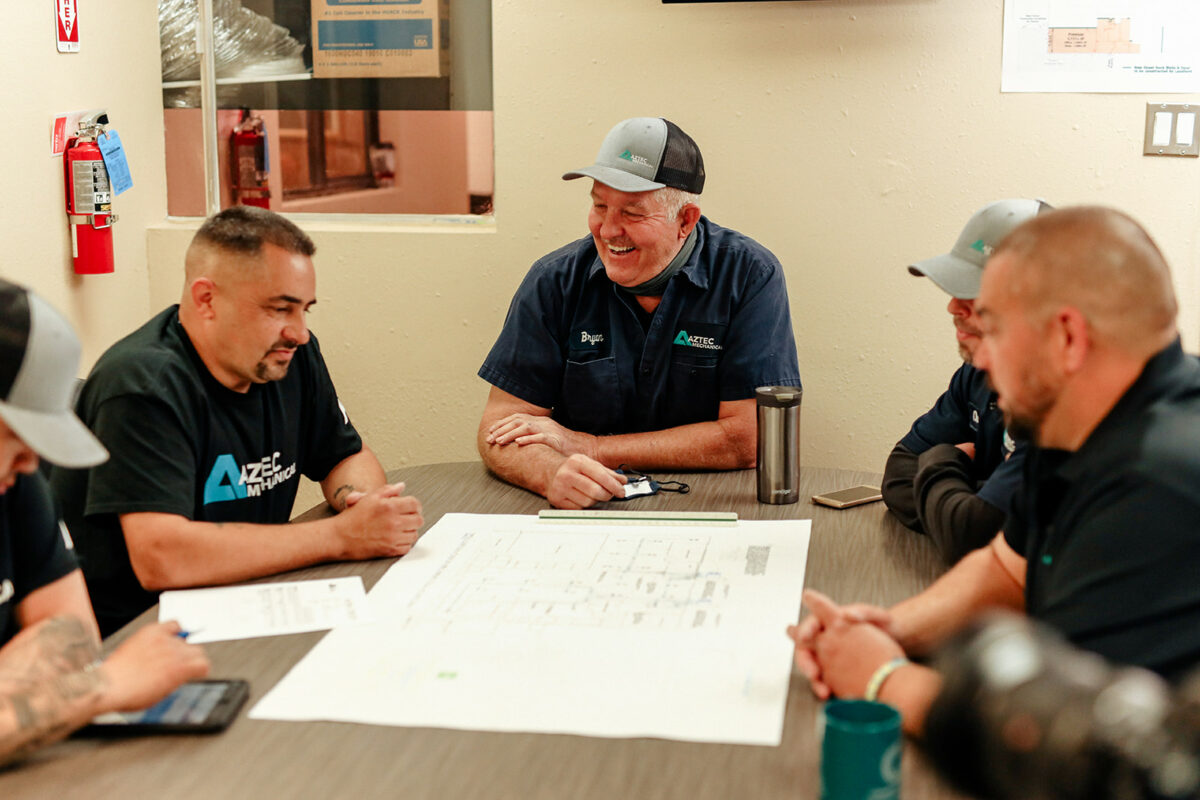
Finding the right office temperature for your employees, or the commercial building you manage, can be a challenge. This employee is a bit too hot. This employee is a bit too cold. Choose a temperature that’s too hot, and you risk overtaxing employees or putting them to sleep. If it’s too cold, you’ll send workers scrambling for fingerless gloves, blankets, and energy-sucking space heaters.
A 2018 Career Builder study found that 46 percent of American workers reported their office was too hot or cold. But they couldn’t agree on which direction the temperature was uncomfortable: 51 percent complained that an office that was too cold impacted their productivity, while 67 percent said an office that was too warm did the same. The study also found that the office temperature is a hot topic around the water cooler. Fifteen percent of workers reported they’d disagreed with a coworker about the office temperature. Some take to subversive tactics and covertly change the temperature. Here’s the latest data about finding the right temperature for your office space.
Ideal Office Temperatures in the 60s
It used to be an industry standard that the ideal office temperature fell between 70 and 73 degrees. However, that thinking was based on a very particular office worker from the 1960s: a man, who was wearing a suit or sport jacket.
That model is outdated in several ways. First, women make up 57.4 percent of the American labor force. Men and women experience very different metabolic rates and sensations of body temperature. Second, today’s businesses have more casual dress codes with some workers wearing less insulating apparel like t-shirts and jeans. Finally, this model assumes the staff members are sitting behind a desk not doing active physical activity, which can impact the rise of internal body temperatures.
Keeping Your Commercial Building Temperature Comfortable
A 2004 Cornell study found that the warmer the workers are, the better. Researchers found that workers with a chill made more typing errors and caused their hourly labor cost to increase 10 percent. The study found that when the office temperature increased from 68 to 77 degrees, typing errors decreased and output increased. That’s particularly true in the case of women, who perform better at higher temperatures.
U.S. Occupational Safety and Health Administration (OSHA) also provides guidance on temperature settings. Although it doesn’t require businesses to maintain commercial buildings at specific temperatures, OSHA recommends the thermostat remain between 68 and 76 degrees F. That still leaves a wide range of possible settings. So, how do you find and keep the right one?
Strategies to Maintain the Ideal Temperature
- Poll your employees. If you’re having trouble nail down the right temperature, survey your employees to find how they feel most comfortable. This will also help everyone feel involved in the process. Once agreed upon, post office etiquette signs to encourage workers to maintain the temperature setting.
- Allow personal responses. If they need to further adjust their conditions, encourage employees to bring in sweaters or blankets to stay warm. Or, if they need to cool off, allow for an adaptable dress code.
- Invest in smart thermostats. Temperatures vary throughout the day. Smart thermostats can sense the environment and adjust heating or cooling for maximum comfort. They can adjust to different occupancy levels based on workers’ schedules. This is becoming increasingly important as workers move to work-from-home hybrid models when your entire staff may not be in your headquarters at the same time.
- Recognize different needs across your office or building. Several factors can affect temperature or the feel of the office space. For example, if your office building has ample windows, more sunlight will stream in. That can make the space feel warmer. If the room has tall ceilings, additional head-height can create drafts and make the room feel cooler. Additionally, a building’s particular construction can leave some rooms sweltering and others frigid. Controlling the space’s temperature based on zones, rather than a universal standard for the entire office, can help mitigate these differences.
- Perform routine HVAC maintenance. Well-maintained HVAC systems will run more efficiently and will help you keep your office temperature consistent.
How Aztec Mechanical Can Help
Aztec Mechanical provides comprehensive heating and cooling services for residential and commercial units. We can help you install a smart thermostat or establish heating/cooling zones in your office space, as well as performing routine HVAC maintenance. Our qualified technicians aren’t just skilled professionals. We also keep a company standard of doing the right thing. We will never overcharge or sell you a service you don’t need. Contact us today to see how we can help.

